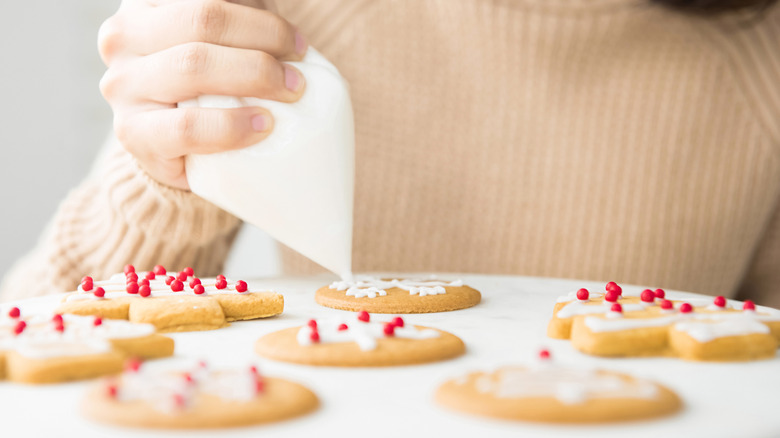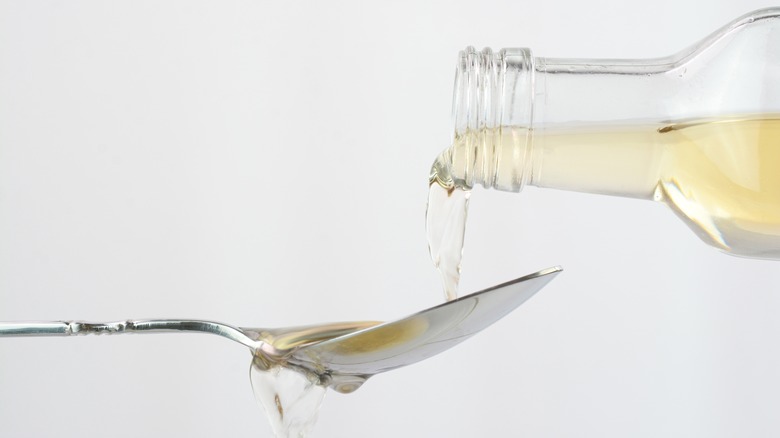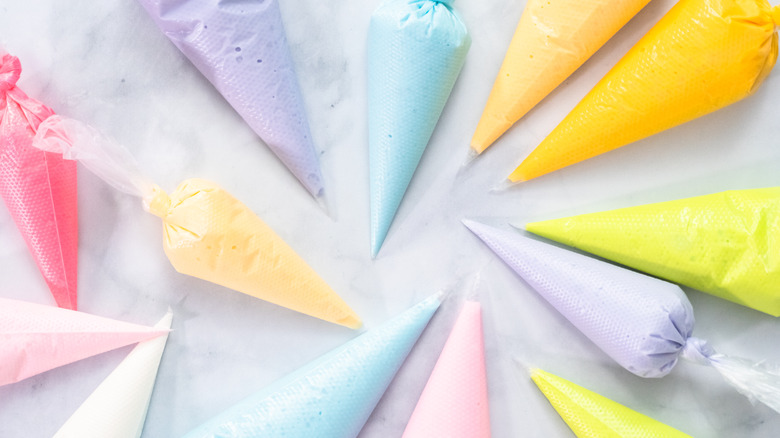The Secret Ingredient To Add To Icing For Undeniable Flavor
One of the most basic elements in decorating baked goods is adding a layer of frosting or icing. Although they are often used interchangeably, the two are completely different kinds of cake and cookie toppers. Whereas frosting is usually based on some type of fat (butter, shortening, heavy cream), icing has a base of sugar and water, making it more runny and not as able to hold its shape.
However, royal icing is a beautiful version that gets its stability from egg whites or meringue powder to create gorgeous, smooth, iced surfaces. And it can be layered to create ornate details. But, one thing it doesn't have going for it: flavor.
Overall, royal icing is meant for show, making whatever it's added to look good. It typically tastes like sugar but not much else. But, there are ways to make it more interesting; one such way is to hit it with a shot of vinegar. Don't worry, the icing won't taste sour or like vinegar at all, but the acid will help balance out the sweetness, making it taste more pleasant. Even better, it will make the icing stronger and more durable.
Vinegar provides more flavor and structure
Royal icing can be used to decorate cookies, biscuits, breads, and cakes. It also makes for the perfect "snow" effect on gingerbread houses. Its delicate consistency likewise makes it ideal for intricate, detailed decorations, which is why it's often a top choice for wedding cakes.
It often starts with a base of fresh egg whites. These are usually beaten together before some powdered sugar is added. If you need a thinner consistency than what is produced (to flood cookies, for example), cold water can be added. By mixing in some vinegar, it will give another layer of flavor and also help hold the icing together better. (In general, you'll need a quarter of a teaspoon of vinegar for every three egg whites you use.)
The boost from added vinegar is ideal for gingerbread houses that need to be built and "glued" together with icing. In addition, the added ingredient helps the icing set faster, speeding up the time it would normally take to build the structure. Once it dries, royal icing is hard and sturdy and has a matte finish. And, when biting into a cookie with royal icing, it will be noticeably toothsome but it breaks apart very easily.
Other ways to jazz up royal icing
When royal icing is made with egg whites, powdered sugar, and vinegar, it will turn out bright white in color, but you can add a pop of the rainbow with a little food coloring. Look for flavored extracts as well that can give royal icing a slight hue but also a specific taste — perhaps some peppermint, lemon, orange, cinnamon, rum, or others (another popular addition is vanilla extract). Just be sure to add slowly, start with a ¼ teaspoon of extract and taste to see if you want more.
To add some glam to your royal icing, consider including some luster dust in the mix for a bit of sparkle. Here's the thing, though, don't put the dust into the icing, but rather apply it on top by painting it onto your royal icing for a gorgeous, metallic effect.
Clearly, there are all kinds of colors and flavors you can create with royal icing, making it a wonderful and fun option for baked goods. And just adding a bit of vinegar to a standard recipe will give you an even tastier and stronger topper that you can rely on again and again.



